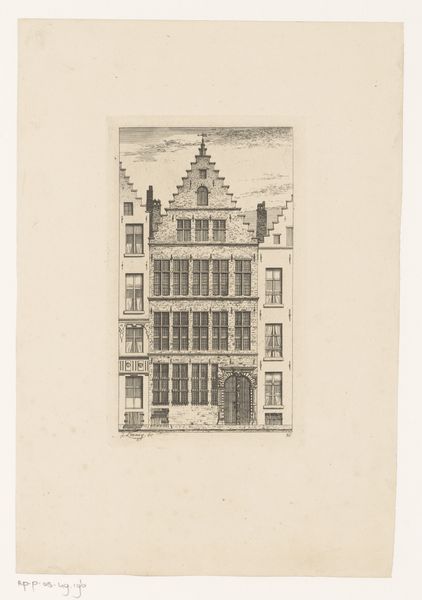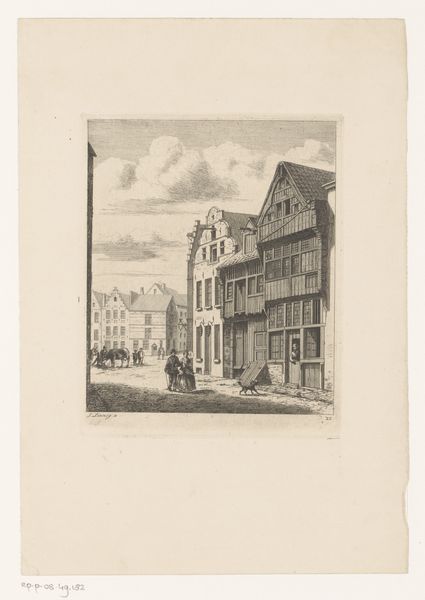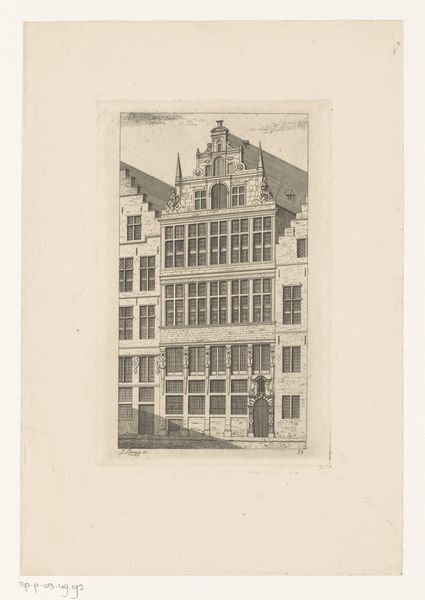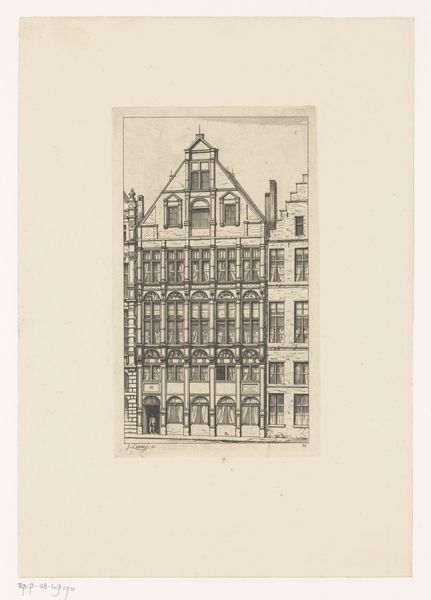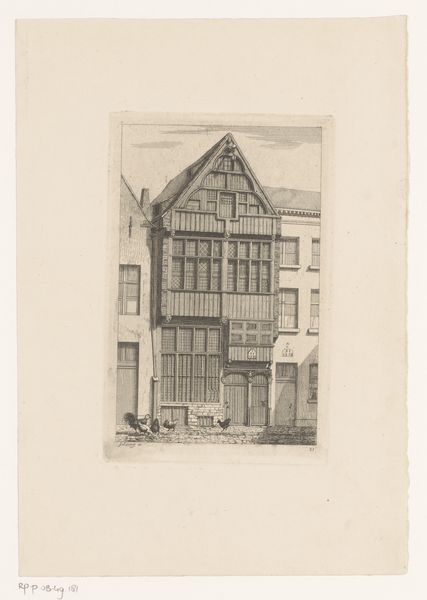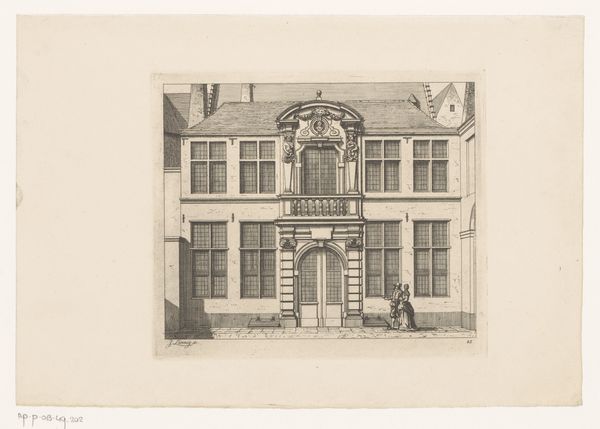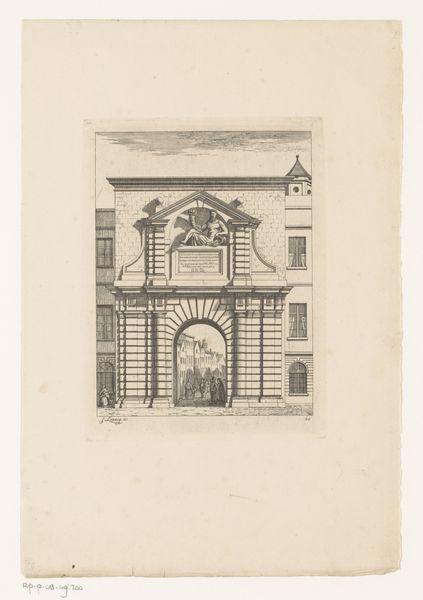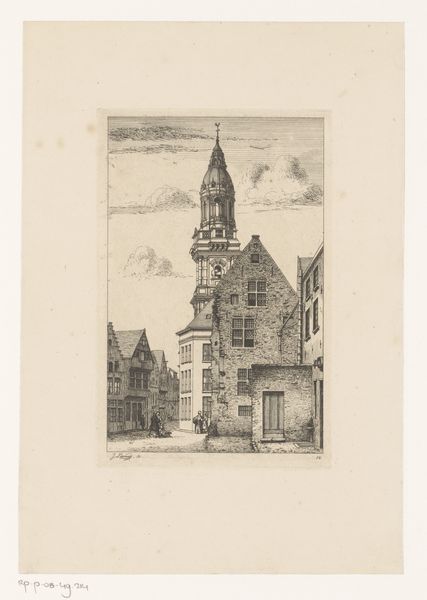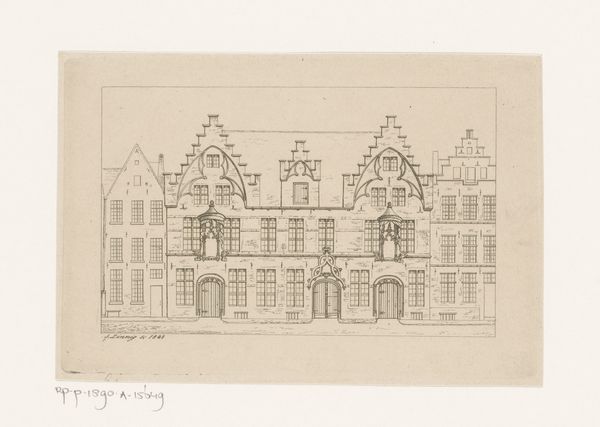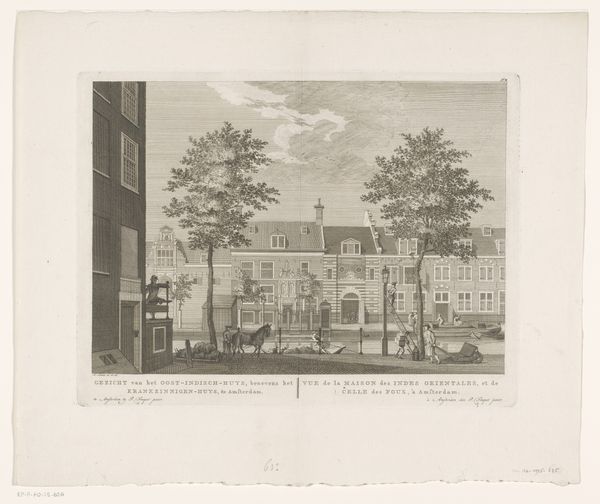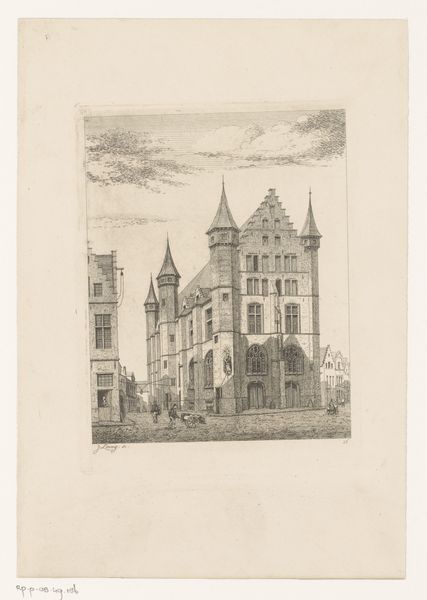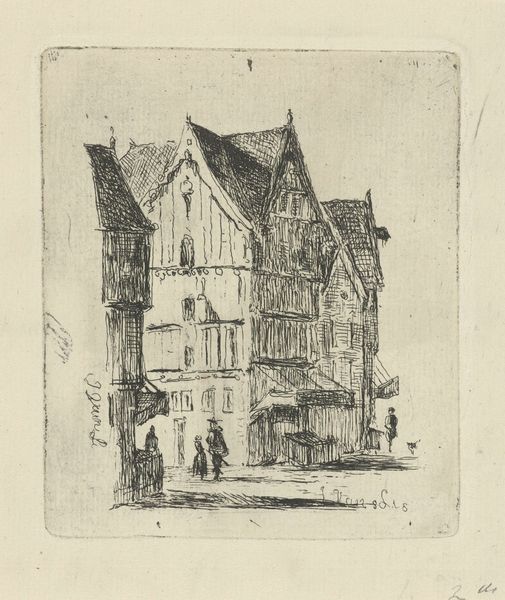
drawing, print, etching, architecture
#
drawing
# print
#
etching
#
landscape
#
etching
#
architecture
#
realism
#
building
Dimensions: height 181 mm, width 164 mm
Copyright: Rijks Museum: Open Domain
Curator: Linnig’s 1868 etching, “Gevel van het huis van de Ridders van de Duitse Orde,” captures the facade of a historic building. Editor: It possesses a sort of stoic and calm presentation, the stark architectural facade and the figures going about their lives creates a study on structure. It creates a subtle, complex mood within me as I look at its shapes. Curator: The building itself is imbued with historical weight, especially with its connection to the Teutonic Order. This order carries immense cultural significance tied to medieval concepts of Christian holy war and European expansion, though by this point in time, the Order's influence has changed dramatically. Editor: One notes the precision in the line work. Note the density of cross-hatching to give form to the stonework. Look at how the texture variations produce different effects based on how the materials are employed. Curator: Beyond its materiality, the composition conveys a specific symbolic understanding. It isn't simply documenting; it's actively choosing a viewpoint that highlights particular virtues or aspects of societal power. Consider how doorways and arches may signal thresholds, passages, or states of change in cultural understandings, maybe offering views on secularization and industrial change. Editor: Do the dogs figure into this symbolic calculus? They seem like they’re mirroring or emphasizing a certain level of domesticity or ordinariness compared with the stoicism we talked about before. It feels more organic somehow in contrast to the strict organization of the structure, what can you tell from it? Curator: Perhaps to convey a certain continuity or historical narrative, placing common animals besides more formal elements creates layers to interpret a picture like this one. They represent enduring features alongside the transformations reflected in the setting. Editor: It's a delicate equilibrium. As an analysis on architecture and culture, the print evokes many interpretations, many paths toward cultural association in a single still depiction. I think I could walk by this structure every day and see a little different aspect each time. Curator: Precisely, in its intricate visual syntax, Linnig delivers a unique exploration into not just visual architecture, but also how memory interacts across it to depict history.
Comments
No comments
Be the first to comment and join the conversation on the ultimate creative platform.
